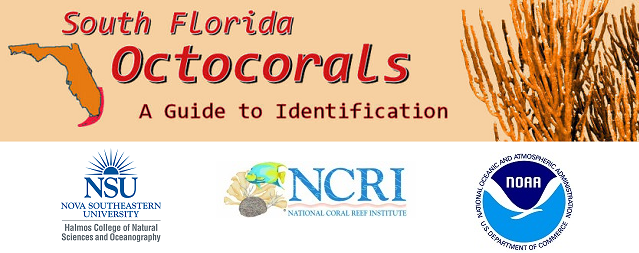Preview

Family
Plexauridae
Common Name(s)
Porous sea rod, Porous false plexaura, Dry sea feather
Colony Form
Colony form Bushy; not in a single plane; ~0.2-2.5 m tall.
Axis
Cylindrical
Branches
Crowded and ascending; long or stout; round and flexible, ~4-10 mm in diameter.
Apertures
Large, gaping, elliptical or oval and crowded, 0.15 mm across and larger; separated by less than their own diameter; arranged in weak spiral along branches. No protruding calices.
Mucus
Slimy branch tips.
Color
Living colonies light olive gray-brown to purple or greenish-yellow. Dries tan. In alcohol white or gray.
Sclerites
Polyp armature: none. Axial layer: deep purple capstans (0.1-0.15 mm), small spindles (0.2 mm and longer), and irregular sclerites (0.15 mm and larger). Outer layers: abundant colorless spindles 0.6-1.0 mm long, with prominent, widely spaced tubercles often developed as strong spines along one side, and large clubs to 0.4 mm long, grading into spindles with spines on one side. Spindles in deeper layers deep purple, often branched and forming 3- or 4-rayed sclerites.
Habitat
Most reefs, 0-49 m, most commonly 0-30 m. Bayer (1961) recorded it off Colombia in 283 m.
Distribution
Bahamas, South Florida, and Caribbean Sea.
Similar Species
Pseudoplexaura crucis; Plexaurella grisea; Pseudoplexaura flagellosa; Pseudoplexaura wagenaari; Eunicea knighti
Date Taken
4-11-2016



Notes
Crowded apertures distinguish this species from P. flagellosa (Bayer, 1961). Flamingo tongue gastropods, Cyphoma spp., are common predators of P. porosa (Lasker et al., 1988).